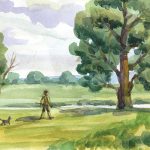Deep in the woods of Forest Hills, Jodie Rippy has created an elegant sanctuary for her art
By William Irvine • Photographs by Rick Ricozzi
Amid the rows of sedate 1920s Colonial Revival and Tudor houses of Forest Hills, you will notice — if you have an eagle eye — an unobtrusive and shady driveway, surrounded by large underbrush on either side and a discreet house number. No property is visible. Upon entering this dark cave of green you quickly come into the light, passing a cheery Victorian-style glass greenhouse; and there, deep in the woods, is a cozy cottage, which serves as the art studio and part-time refuge of the Wilmington artist Jodie Rippy.
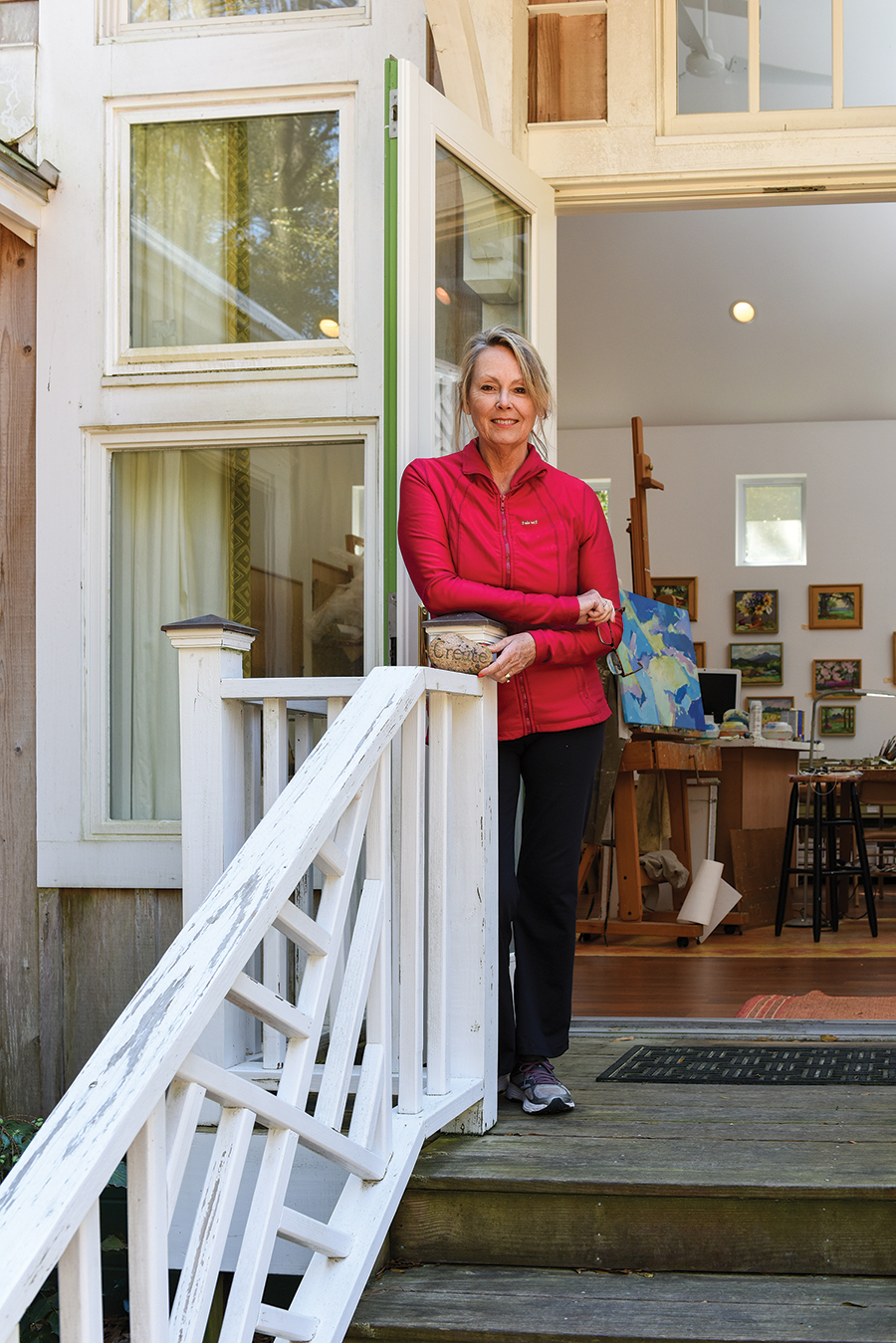
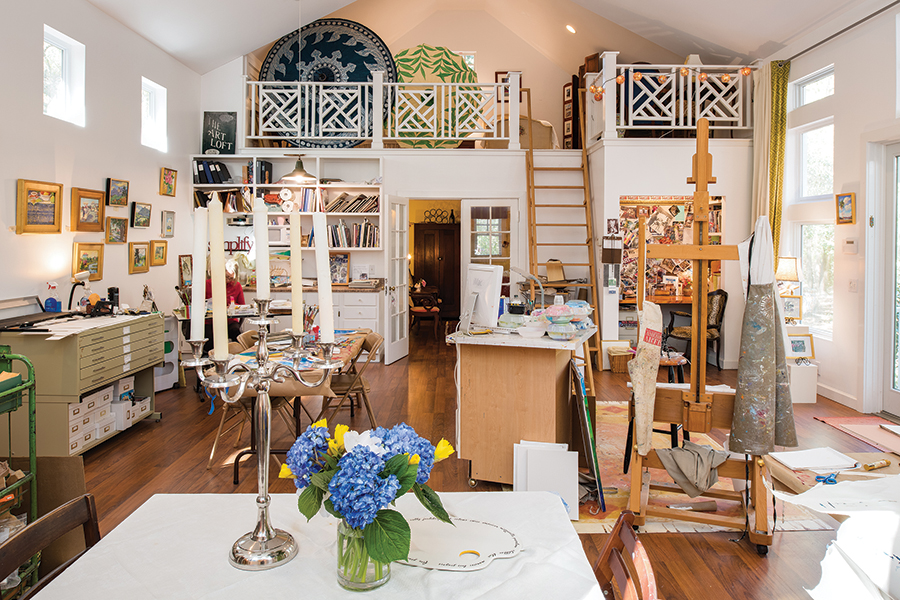
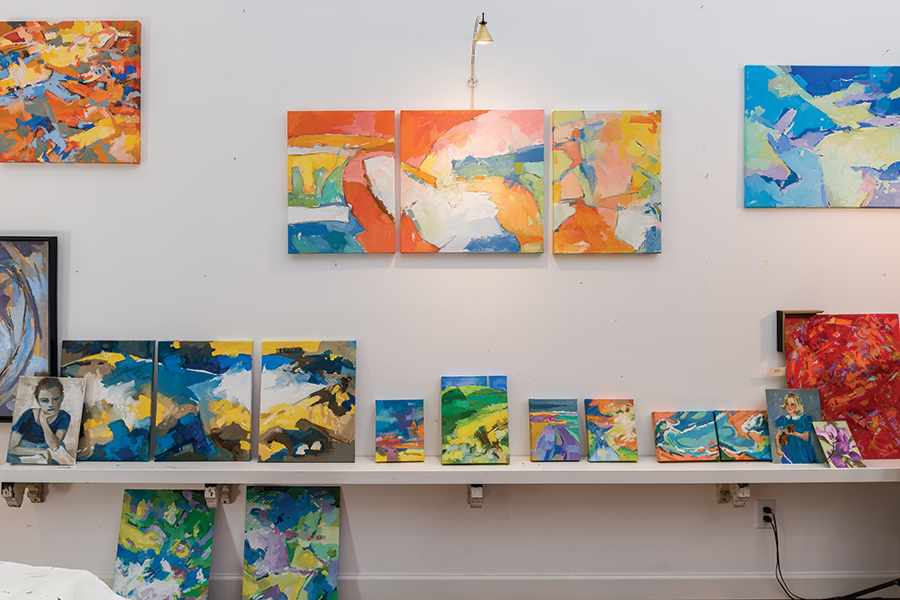
To call it a studio is only the beginning, says Rippy, who retreats here to work from her home in nearby Wrightsville Beach, where she and her husband have lived for the past 20 years; the studio was completed in 2006. “It’s a multipurpose space — an area for my artwork, a place where I teach classes, a playroom for my grandchildren. We even came here for Christmas Eve dinner after church,” she says with a smile. And the studio has also been used as a space for music and prayer. Christian musicians have performed here — “They tell me the acoustics are phenomenal” — and a clergyman has come here to pray and hold a silent vigil in the woods. It has also been used as a space for fundraisers for hospice and other charities. “So really it’s a blessed space in more ways than one,” says Rippy.
The approach to the studio is down a meandering walkway, created by her grandchildren, who embedded the pavement with a rainbow of pottery shards, brought back by Rippy from her painting trips to France, Italy and Portugal. “A few also came from the Vietri outlet near Hillsborough,” she confesses. Upon entering the cottage, you are surrounded by sunlight and space — a vast two-story room which, in addition to Rippy’s art studio, contains a small office and a staircase to a loft level and a bedroom. The largest wall features a cruciform arrangement of windows, all salvaged or rejects from local building suppliers. And the feeling is almost ecclesiastical: “A group of Hispanic guys helped with the builders, and they saw the cross formation of the windows and asked if it was a church, and I have always admired that,” Rippy says. “I am a woman of faith, so that meant a lot to me.”
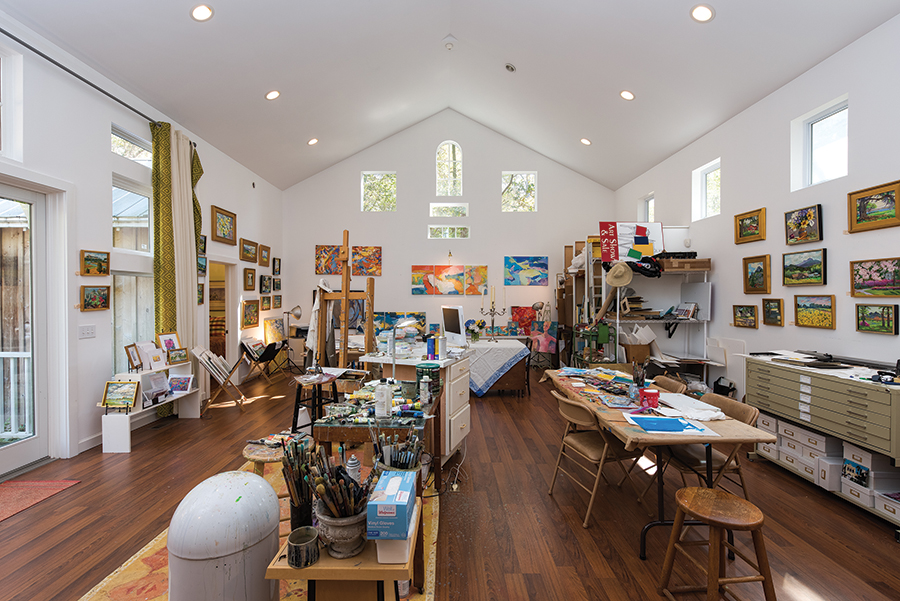
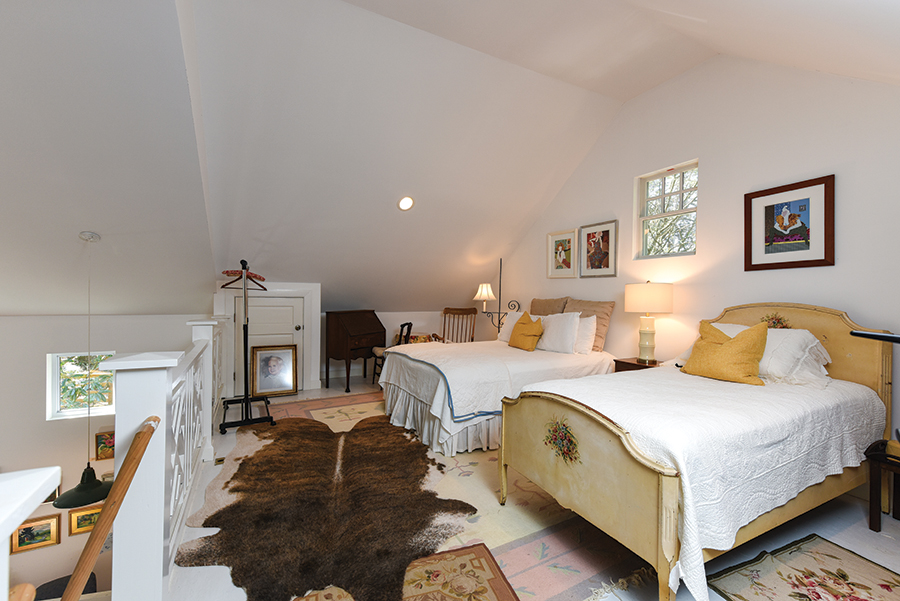
The main room serves as Rippy’s creative mission control, with long tables, painting easels and prepared palettes at the ready — evidence of a busy artist at work — as well as a storage rack for larger canvases. The plain white walls serve as a great space for hanging artworks in progress. An accomplished painter since childhood (at the age of 10 she proudly painted a portrait of Caroline Kennedy, which she sent directly to the president; a warm thank-you note from the White House followed), Rippy has studied with the American painters Wolf Kahn and Burton Silverman, among others, and in addition to museum exhibitions across the South her work appears in many private and corporate collections, including those of the Cameron Art Museum, Bank of America, and the late movie producer Dino de Laurentiis.
All the windows and doors and woodwork in the studio are the result of adaptive reuse: The interior doors were found at a local antiques shop; windows at the Historic Wilmington Foundation’s salvage store. The handsome Chinese Chippendale balcony railings were salvaged from the demolition of the old Cape Fear Country Club. To one side of the doorway is a pocket office with a large inspiration board of artworks and gallery invitations and postcards of favorite paintings that she has picked up on her travels. The desk is also recycled — it’s a door purchased at the Habitat ReStore that Rippy faux-finished in a marbleized pattern. A ladder leads to the sleeping loft, which contains two full-size beds; another small bedroom hides behind a door off the front of the studio.
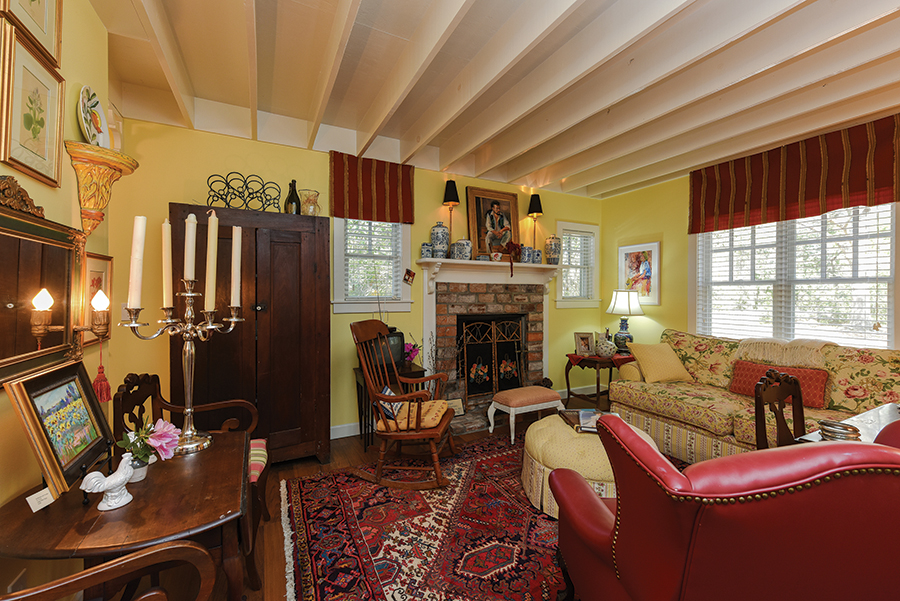
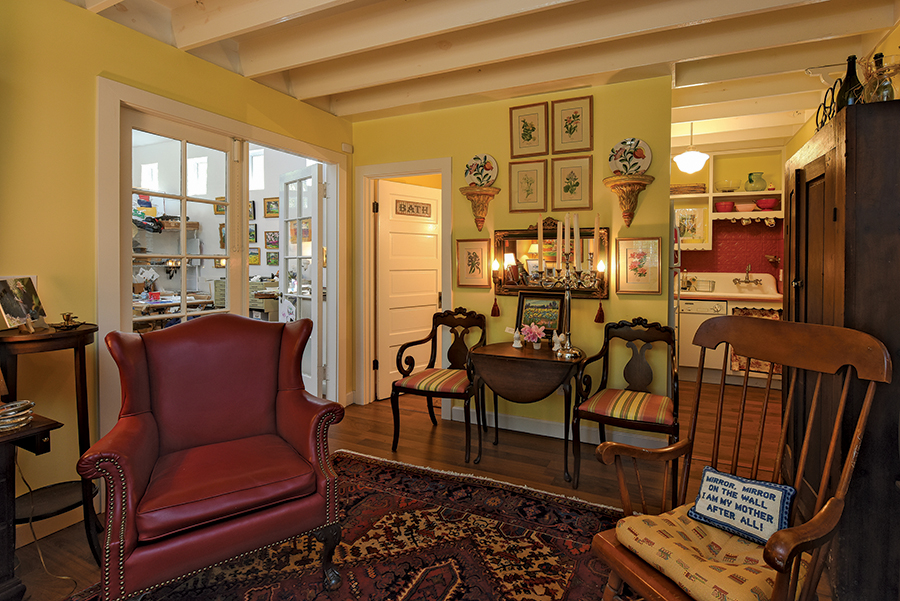
It’s a surprise to move from this serene space into the stylish, cozy living room, one that would be at home in a much larger house. Furnished with a handsome chintz sofa and red leather wing chair, the centerpiece of the room is a large fireplace of burnished brick. “My daughter and I salvaged the bricks that surround the fireplace after our downtown dealership burned to the ground in an electrical fire,” she says. There is a painting of the house on Park Avenue, where she and her husband raised their three children, who now all live in Wilmington (she also has eight grandchildren, frequent visitors to the studio). On the far wall hangs a collection of antique botanical prints from Charleston, and an antique wooden jelly cupboard serves as china and glassware storage. A small Pullman kitchen has a recycled heart-pine countertop and an old-fashioned sink, which Rippy found online. And on the wall, a large woodcut of a frog: “It’s the first piece of art I ever bought — I was a college student at Peace College and it caught my eye and fit my budget.”
I began to think that I wouldn’t mind spending a quiet weekend here in the woods. It is such a calming place, extremely conducive to both serenity and creativity. “This space is my sanctuary,” Rippy says. “It is where I work, create, recharge, retreat and become centered. We both are works in progress.”
William Irvine is the senior editor of Salt.

